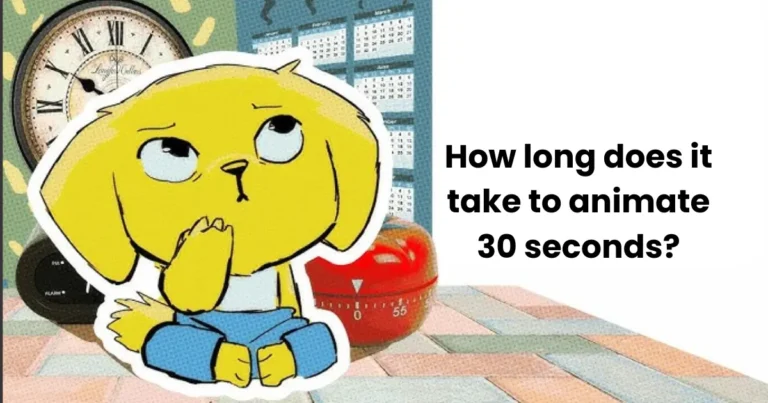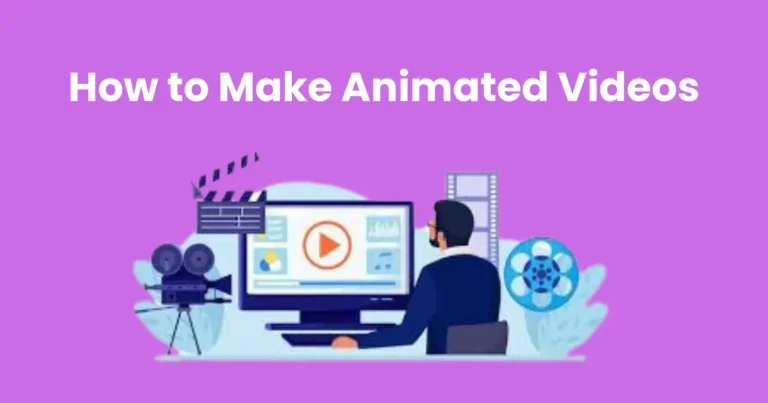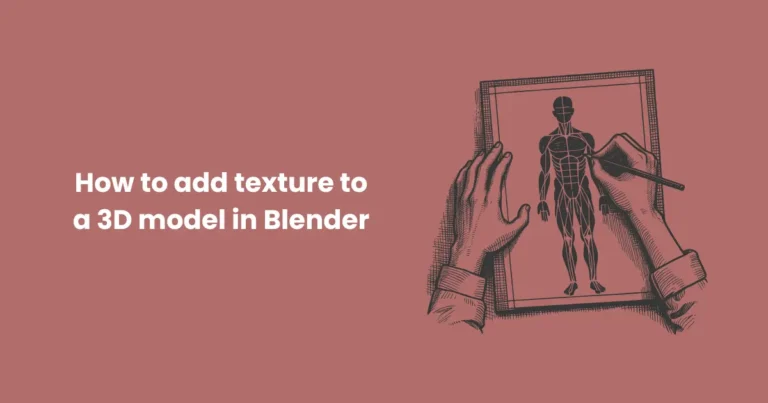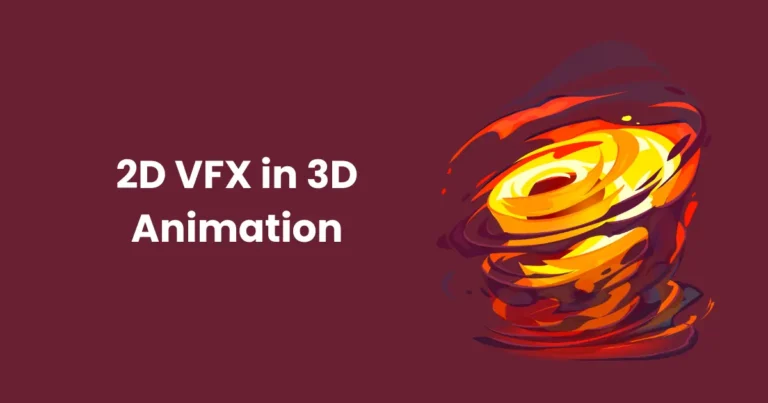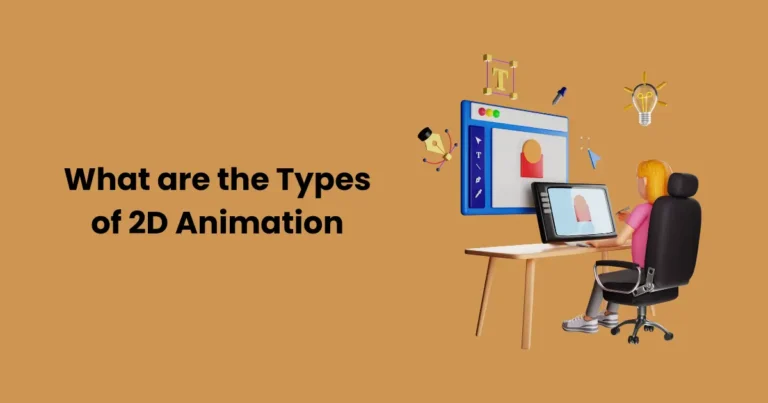Why Are Animated Movies So Popular? | Top 5 Reasons That Make An Animation Success
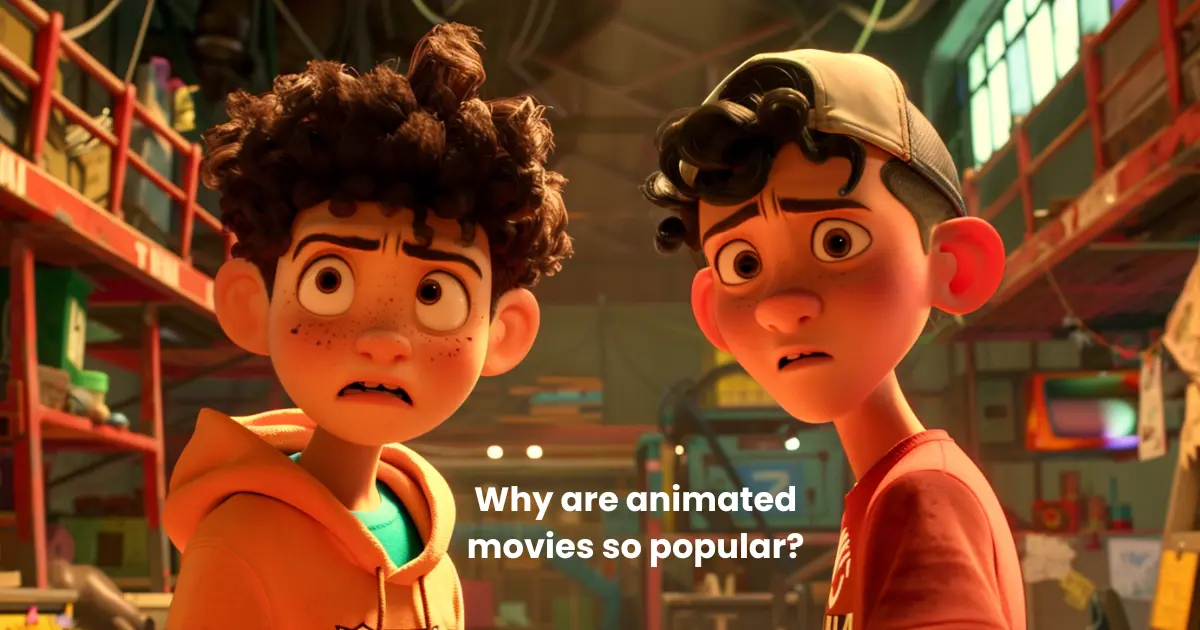
Contents
- 1 The Appeal of Animation: Why Are Animated Movies So Popular?
- 2 Visual Creativity and Imagination
- 3 Universal Appeal of Animated Films
- 4 Innovative Storytelling Techniques
- 4.0.1 Creative Freedom in Visual Storytelling
- 4.0.2 Non-Linear Narratives and Fantasy Elements
- 4.0.3 Breaking the Fourth Wall
- 4.0.4 Emotional Connection in Animated Movies
- 4.0.5 Expressive Characters and Relatable Emotions
- 4.0.6 Universal Themes of Love, Loss, and Growth
- 4.0.7 The Power of Music and Sound in Emotional Storytelling
- 5 Cultural Significance and Global Reach
- 6 Technological Advancements in Animation
- 7 Animated Movies for All Ages
Animated movies have become a dominant force in the entertainment industry, captivating audiences worldwide with their unique ability to blend creativity, storytelling, and cutting-edge technology. From childhood favorites to cinematic masterpieces, animation transcends age, culture, and language, making it one of the most beloved forms of entertainment.
But why are animated movies so popular? This enduring popularity can be attributed to several factors, including their visual appeal, universal themes, emotional depth, use of advanced tools, and innovative storytelling techniques. Whether it’s the mesmerizing animation techniques, unforgettable characters, or timeless narratives, animated films continue to resonate with viewers across generations, ensuring their place in popular culture. In this article, we’ll explore the key reasons why animated movies remain so captivating and why they continue to attract audiences of all ages.
The Appeal of Animation: Why Are Animated Movies So Popular?
Animated movies hold a unique charm that sets them apart from other forms of filmmaking. One of the main reasons why animated movies are so popular is their ability to create entire worlds from scratch, offering a visual experience that traditional live-action films simply can’t match. Through animation, filmmakers can explore limitless possibilities—whether it’s creating fantastical landscapes, characters that defy the laws of nature, or breathtaking visuals that stir the imagination. This level of creative freedom attracts audiences looking for something fresh and exciting, and it’s a key factor in the enduring appeal of animated films.
But animation is more than just a visual spectacle. It’s a versatile storytelling medium that can evoke emotions in ways other genres might struggle to achieve. Animated films have the ability to convey complex emotions through exaggerated character expressions, subtle details, and dynamic animation styles, making them more emotionally engaging. Whether it’s the sorrowful gaze of a cartoon character or the joyous, exaggerated movements of a hero, animation allows filmmakers to communicate feelings in a more expressive and visually captivating way.
Another reason why animated movies are so popular is their broad accessibility. Animation has the ability to transcend cultural, linguistic, and generational barriers. No matter where you are in the world or what language you speak, animated films can be universally understood. This universal appeal is what makes animated movies so beloved across the globe, from children in small towns to adults in major cities. Animated movies are designed to entertain and connect with audiences of all ages, making them a versatile form of entertainment that appeals to families, friends, and even solo viewers.
Visual Creativity and Imagination
One of the most captivating aspects of animated movies is the sheer visual creativity and imagination they offer. Animation is a medium that allows filmmakers to break free from the constraints of reality and explore limitless possibilities. This freedom is a significant reason why animated movies are so popular—they open the door to worlds that live-action films could only dream of.

In an animated movie, anything is possible. Whether it’s a city made entirely of candy, talking animals embarking on grand adventures, or planets that can change shape with a single thought, the visual scope of animated films knows no bounds. The ability to create such fantastical worlds gives animated movies a distinct appeal, allowing audiences to immerse themselves in vibrant settings and larger-than-life stories that are often impossible to replicate in traditional filmmaking.
The visual style of animated movies is also incredibly diverse, ranging from the hand-drawn charm of classic Disney films to the cutting-edge, computer-generated imagery (CGI) used in modern blockbusters. This variety means that every animated film is visually unique, with its own artistic identity. Why are animated movies so popular? Because the visual storytelling in animation is constantly evolving, offering new ways to dazzle and engage viewers. For instance, Pixar’s use of hyper-realistic CGI animation in The Incredibles or the watercolor-like textures of Studio Ghibli’s My Neighbor Totoro both showcase how animation allows for endless stylistic experimentation, appealing to different tastes and emotions.
The ability to bend the laws of physics and reality also makes animation a powerful tool for imaginative storytelling. Characters in animated films can defy gravity, stretch to comical lengths, or even change their form in ways that are visually stunning and delightfully surprising. These imaginative elements give animated films a whimsical charm, inviting audiences to suspend disbelief and embrace the fantastical.
Universal Appeal of Animated Films
One of the most compelling reasons why animated movies are so popular is their ability to transcend cultural, linguistic, and generational boundaries, making them universally accessible. Unlike other forms of media that may be tied to specific regions or languages, animated films have a unique ability to connect with audiences worldwide, regardless of age, nationality, or background. This universal appeal is what makes animation such a powerful and enduring force in global entertainment.
At the heart of this appeal is the ability of animated films to tell stories that resonate with universal themes—such as love, friendship, courage, and self-discovery—that everyone can relate to. For example, The Lion King explores themes of identity and responsibility, while Frozen delves into the power of sisterhood and personal growth. These timeless themes are central to the emotional core of many animated films, making them relatable to people of all ages and from all walks of life.
Animated movies also have the ability to evoke nostalgia, bridging generations. Parents, grandparents, and children all enjoy animated films, often together as a family. Classic animated films like Cinderella, Snow White, and Aladdin have continued to captivate multiple generations, while modern hits like Toy Story and Zootopia carry forward that tradition. The emotional and visual appeal of animated films allows them to create shared experiences among family members of different ages, contributing to their broad, cross-generational popularity.
Innovative Storytelling Techniques
One of the standout features of animated films is their ability to utilize innovative storytelling techniques that push the boundaries of conventional cinema. This creative flexibility is a significant reason why animated movies are so popular. Animation allows filmmakers to tell stories in ways that live-action films simply cannot, using visual language, imaginative devices, and unconventional narrative structures to engage audiences in fresh and exciting ways.

Creative Freedom in Visual Storytelling
Animation offers filmmakers the ultimate creative freedom when it comes to visual storytelling. Unlike live-action films, where practical effects and real-world constraints shape the narrative, animated movies have the ability to build entire worlds from scratch. This freedom allows for the creation of stunning visuals that can heighten the emotional impact of the story. For instance, the fluid, surreal landscapes in Alice in Wonderland or the dynamic use of color and shape in Inside Out add layers of meaning and emotion to the narrative that would be hard to achieve with traditional filmmaking techniques.
Additionally, animation gives filmmakers the power to convey abstract concepts in visually striking ways. A character’s internal struggle can be represented by transforming their surroundings, while complex emotions can be symbolized through changes in the animation style. This flexibility makes animation a powerful tool for exploring ideas and themes that might be difficult to articulate in live-action formats, adding depth to the storytelling that audiences often find compelling.
Non-Linear Narratives and Fantasy Elements
Another way animated films stand out is through their ability to experiment with non-linear narratives and fantasy elements. Unlike traditional film formats that often follow a clear beginning, middle, and end, animated movies can incorporate unconventional structures without losing coherence. Films like Ratatouille or The Lego Movie play with time, perspective, and multiple storylines, allowing audiences to experience a dynamic and engaging storytelling experience. These narrative techniques not only make the plot more intriguing but also showcase animation’s ability to break free from typical storytelling conventions.
Breaking the Fourth Wall
Breaking the fourth wall is another technique that animated movies often employ, adding a playful and engaging dimension to their storytelling. Films like Shrek and Deadpool use this approach to interact directly with the audience, often for comedic effect, making viewers feel as though they’re part of the action. This self-awareness and willingness to bend the rules of the traditional film medium adds an extra layer of fun to animated movies, inviting audiences to not just watch but engage with the film in a unique way.
Emotional Connection in Animated Movies
One of the most powerful reasons why animated movies are so popular is their ability to forge deep emotional connections with audiences. While animated films may feature fantastical worlds and larger-than-life characters, their true power lies in how they evoke real emotions. Through a combination of expressive characters, visual storytelling, and universal themes, animated movies have an uncanny ability to resonate with viewers on an emotional level, making them memorable long after the credits roll.
Expressive Characters and Relatable Emotions
In animation, characters are designed to be highly expressive, allowing their emotions to be conveyed in ways that live-action actors cannot always achieve. The exaggerated movements, facial expressions, and gestures of animated characters help to communicate their feelings in an immediate and relatable way. For instance, the wide-eyed wonder of Up’s Carl Fredricksen or the joyful determination of Finding Nemo’s Marlin captures emotions so vividly that audiences instantly connect with these characters’ struggles and triumphs.
The visual flexibility of animation also allows for heightened emotions to be conveyed more directly. A character’s sadness can be represented with soft, muted colors or slow movements, while their happiness might be shown through vibrant, fast-paced scenes filled with warmth. This ability to amplify emotions through visual cues ensures that animated films can communicate a range of feelings, from joy to heartbreak, in ways that resonate deeply with viewers. These emotional connections make the characters more memorable and help to create a lasting bond between the audience and the story.
Universal Themes of Love, Loss, and Growth
Many animated films focus on universal human experiences such as love, loss, friendship, and personal growth, which are themes that resonate with audiences of all ages. These are not just abstract concepts but are woven into the narratives in ways that feel both intimate and universal. For example, Toy Story explores the bittersweet nature of growing up and saying goodbye, while Coco delves into the importance of family and remembering loved ones who have passed away. These themes are relatable regardless of cultural or linguistic differences, making animated films emotionally accessible to a wide audience.
Additionally, animated movies often present these themes in a way that is both entertaining and thought-provoking, making it easier for audiences to connect with the deeper emotional currents of the story. The emotional arcs of characters like Elsa in Frozen or Simba in The Lion King are deeply relatable to anyone who has experienced fear, self-doubt, or the loss of a loved one. These films give viewers permission to feel their emotions and, in doing so, foster a sense of connection and empathy that transcends the screen.
The Power of Music and Sound in Emotional Storytelling
Music and sound also play a crucial role in building emotional connections in animated movies. Iconic soundtracks such as The Lion King’s “Circle of Life” or Frozen’s “Let It Go” become more than just songs; they embody the emotional essence of the story and the character’s journey. Through melody and lyrics, these songs amplify the emotional impact of the narrative, enhancing the viewer’s experience and deepening their connection to the film.
The use of sound effects in animation also intensifies emotions. The soft flutter of wings in Bambi, the intense, rhythmic heartbeat in The Incredibles, or the silence of the vast wasteland in WALL-E all help to build an atmosphere that enhances the emotional weight of the scenes. These auditory elements, paired with visual storytelling, create a sensory experience that fully immerses the audience in the emotional journey of the characters.
Cultural Significance and Global Reach
Another reason why animated movies are so popular is their profound cultural significance and ability to reach global audiences. Animated films are more than just entertainment; they often reflect cultural values, explore societal issues, and offer insights into different ways of life. Because of their universal appeal, these films have the power to transcend geographical, linguistic, and cultural boundaries, making them a global phenomenon that speaks to people from all walks of life.

Representation of Different Cultures and Traditions
Animated movies have the unique ability to represent a wide array of cultures and traditions in a way that is both accessible and engaging. By using animation, filmmakers can showcase the beauty, diversity, and complexity of different cultures without the constraints of live-action filmmaking. For example, films like Mulan and Coco delve into specific cultural histories—Chinese folklore in the case of Mulan and Mexican traditions surrounding Día de los Muertos in Coco—while making these topics approachable to a global audience.
The careful attention to cultural detail in these films also helps to foster greater understanding and respect for different ways of life. By portraying rich cultural stories and introducing diverse characters, animated films break down stereotypes and promote inclusivity. This cultural representation makes animated movies more meaningful to people from the cultures being depicted, while also providing valuable educational opportunities for viewers from other parts of the world.
Global Appeal and Accessibility
The accessibility of animated films is another reason why animated movies are so popular. Unlike live-action films, which can sometimes be limited by language, accents, or regional references, animation allows for a more universal form of storytelling. The visual nature of animation—combined with carefully crafted dialogues, expressive animation, and emotive music—allows animated films to communicate across language barriers. This accessibility is what has enabled animated films to achieve widespread popularity and box office success, regardless of the country in which they were made.
Take, for example, the global success of films like Frozen and Toy Story. While these films are primarily made for Western audiences, their universal themes of friendship, love, and personal growth resonate with people worldwide. Additionally, the stunning visuals, catchy songs, and entertaining characters make them just as captivating for audiences in other countries, where they are often dubbed or subtitled in local languages.
The global reach of animated films has led to a greater exchange of ideas and artistic practices between different cultures. The influence of Japanese animation (anime), for example, can be seen in many Western films, while Hollywood animated films have made their mark on international cinema. This cultural exchange enriches the animation industry and broadens its impact, allowing animated movies to be appreciated across the globe.
Animated Films as Cultural Icons
In addition to their ability to connect cultures, animated films often become cultural icons in their own right. Characters like Mickey Mouse, SpongeBob SquarePants, and Elsa from Frozen are recognized worldwide, transcending the films they originated from to become symbols of popular culture. These characters, and the stories they belong to, become ingrained in the collective memory of audiences, often appearing in merchandise, theme parks, and social media, further cementing their cultural significance.
The longevity of these cultural icons demonstrates the lasting impact of animated movies on societies around the world. Whether they’re shaping childhood memories, influencing fashion trends, or even sparking conversations on social media, animated characters and their stories become part of the cultural fabric that connects people globally.
Technological Advancements in Animation
One of the primary reasons why animated movies are so popular today is the rapid evolution of technology in the animation industry. Over the years, advancements in animation techniques and technology have expanded the possibilities for filmmakers, allowing them to create more visually stunning and immersive experiences. These innovations have revolutionized both the production process and the viewing experience, making animated films more accessible, dynamic, and engaging than ever before.

The Shift from Traditional to Digital Animation
Historically, animation was a labor-intensive process, relying on hand-drawn frames to create movement. Classic animated films like Snow White and the Seven Dwarfs and Cinderella are iconic examples of traditional animation, where every single frame was meticulously drawn by animators. While this method produced beautiful, timeless films, it was also time-consuming and costly.
With the advent of digital technology, the animation industry underwent a major transformation. The introduction of computer-generated imagery (CGI) revolutionized the way animated films were made. CGI allowed animators to create more intricate and complex visual effects, and it enabled them to produce smoother, more realistic animations at a faster pace. Movies like Toy Story, the first entirely computer-animated feature film, set the stage for a new era in animation. The ability to use 3D models and digital tools for animation has since become the standard for many modern animated films.
Realistic CGI and 3D Animation
The ability to create photorealistic CGI and 3D animation is another key advancement that has contributed to the popularity of animated films. Today’s filmmakers can create characters and environments that closely mimic the real world, adding depth and texture that were previously unimaginable. Films like Avatar, The Incredibles 2, and Frozen II showcase the incredible progress made in 3D animation, with characters and scenes that are both visually striking and emotionally engaging.
The realism achieved through CGI has expanded the storytelling possibilities for animated films, allowing filmmakers to craft hyper-realistic environments that were once limited to live-action films. This technology also allows for greater flexibility in character design, enabling animators to create characters that range from the realistic to the fantastical, all while maintaining a sense of emotional depth and relatability.
Motion Capture Technology
Motion capture (mo-cap) technology has further enhanced the realism of animated characters. By capturing the movements of real actors and transferring them into the digital world, motion capture allows animators to create more lifelike characters with subtle, realistic movements. This technique has been used extensively in films like The Lord of the Rings (for the character Gollum) and Avatar (for the Na’vi people), where actors’ performances are digitally mapped to animated characters, resulting in smoother, more natural motion.
In animated films, motion capture can add a layer of authenticity to characters’ movements, making them feel more human and relatable. The seamless integration of live-action performance with animation creates an experience that blurs the line between the real and the imagined, enhancing the emotional connection between the audience and the characters.
Animated Movies for All Ages
One of the key reasons why animated movies are so popular is their ability to transcend age barriers, making them enjoyable for both children and adults. While animated films are often associated with family-friendly content, the truth is that animation as a medium is versatile enough to cater to a wide range of audiences. From young children to adults seeking more sophisticated narratives, animated films have something to offer everyone.

Appealing to Children: Fun and Learning Combined
For children, animated films are an essential part of their entertainment world, and it’s easy to see why. Animated movies often feature colorful, dynamic visuals that capture the imagination of young minds, alongside playful characters and humorous situations that keep them engaged. Classic characters like Mickey Mouse, SpongeBob SquarePants, and Elsa from Frozen are not only entertaining but also relatable to young viewers, making them accessible and beloved.
Beyond entertainment, animated movies often have educational elements that contribute to a child’s development. Many animated films incorporate important lessons about friendship, empathy, perseverance, and problem-solving. Movies like Finding Nemo, Toy Story, and Moana teach children about values such as teamwork, acceptance, and the importance of self-discovery. The gentle blending of fun and learning in animated films helps foster a positive growth experience for young viewers, making them a staple of childhood entertainment.
Appealing to Adults: Deeper Themes and Complex Narratives
While animated films are often thought of as “children’s entertainment,” the truth is that animation has evolved to offer much more to adult audiences. Filmmakers have increasingly created animated movies that explore complex themes, sophisticated narratives, and mature concepts, making them equally appealing to older viewers.
For example, Shrek is a film that operates on multiple levels: it entertains children with slapstick humor and whimsical adventures, while also offering adults clever satire, fairy tale parodies, and social commentary on issues like self-acceptance and societal expectations. Similarly, movies like Inside Out, Up, and The Incredibles feature deeper emotional arcs and explore topics such as personal growth, family dynamics, and the passage of time. These films offer insights into the human condition that resonate with adult audiences, making them far more than simple cartoons.
Animated films have also proven to be powerful tools for exploring complex societal issues in a way that is both engaging and thought-provoking. Films like WALL-E touch on environmentalism, consumerism, and the dangers of over-reliance on technology, while Zootopia addresses racism, prejudice, and social justice in a way that’s accessible yet profound. These films often provoke discussion and offer valuable perspectives on real-world problems, making animated movies highly relevant for adult viewers as well.
Animated Movies as a Universal Language
One of the reasons animated films appeal to audiences of all ages is that animation itself is a universal language. Through expressive characters, colorful visuals, and non-verbal cues, animation transcends language and cultural differences. Whether it’s the universally understood expressions of joy and sadness on a character’s face or the visual humor that appeals to all ages, animation breaks down barriers and ensures that its message reaches people from various walks of life.
For example, films like The Lion King or Minions have been enjoyed across the globe by audiences of all ages, regardless of language or cultural background. The simplicity and emotional depth of the animation often make these films accessible to audiences who may not be able to understand the language but still connect deeply with the story and characters.
Why Are Animated Movies So Popular? A Final Thought
In reflecting on why animated movies are so popular, it becomes clear that animation has transcended its roots as simple entertainment for children. Today, animated films are cherished by audiences of all ages, offering more than just a fun, visual experience—they provide powerful storytelling, emotional resonance, and the ability to tackle complex themes that resonate deeply with viewers. Whether it’s the universal appeal of vivid characters, the creativity of their worlds, or the ability to explore profound human experiences, animated movies have evolved into a vital part of global culture.
Animation’s versatility allows it to explore issues of identity, societal norms, and personal growth, often in ways that other forms of media cannot. The ability to create fantastical worlds where anything is possible means that animation has the freedom to portray bold ideas, challenge traditional boundaries, and entertain while also inspiring reflection. From addressing environmental concerns to tackling mental health or social justice, animated films engage with themes that influence the way we think and act in the real world.
Ultimately, animated films have become much more than just entertainment—they have become an integral part of popular culture, inspiring generations, shaping societal conversations, and offering moments of joy, reflection, and connection. The enduring popularity of animated movies will continue to be driven by their unique ability to break down barriers and speak to the heart of what it means to be human.

